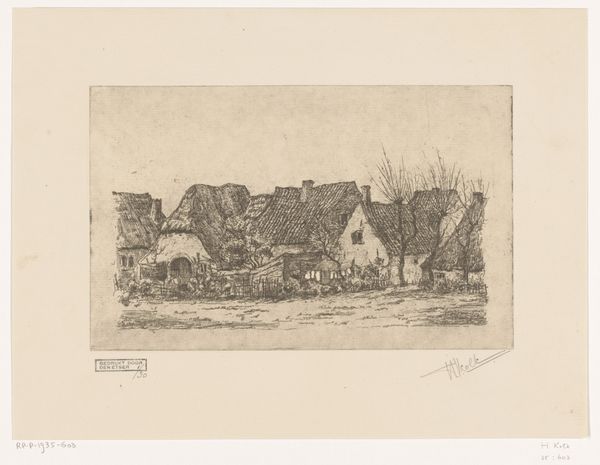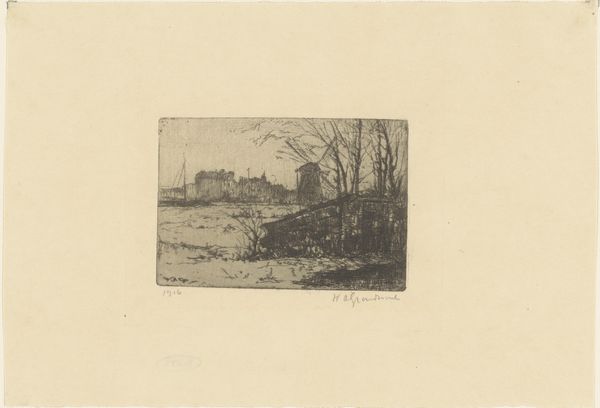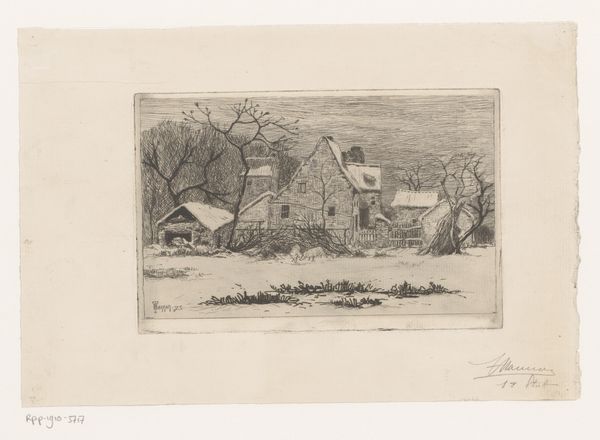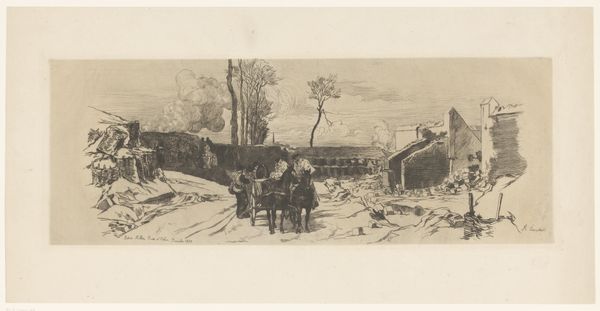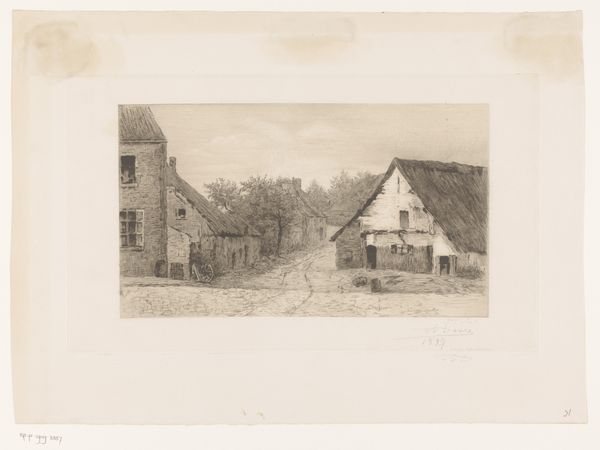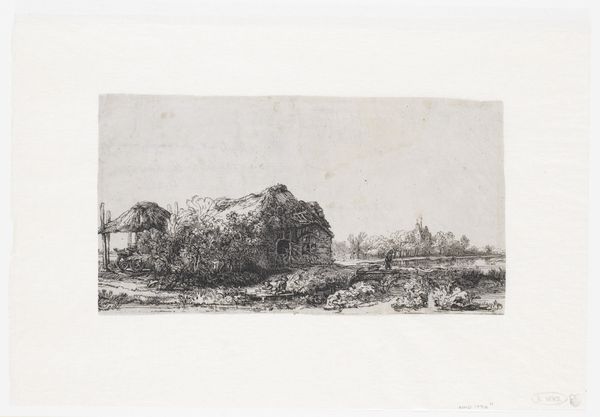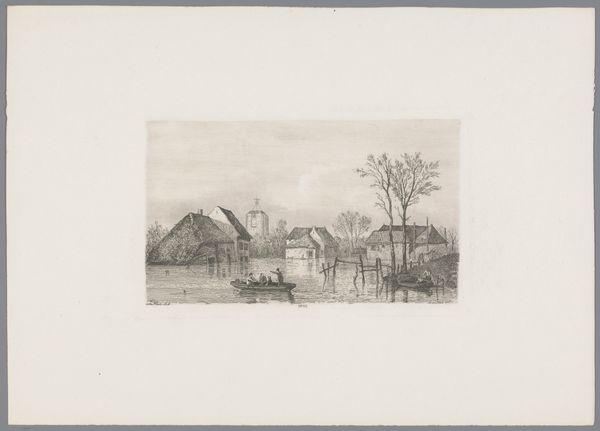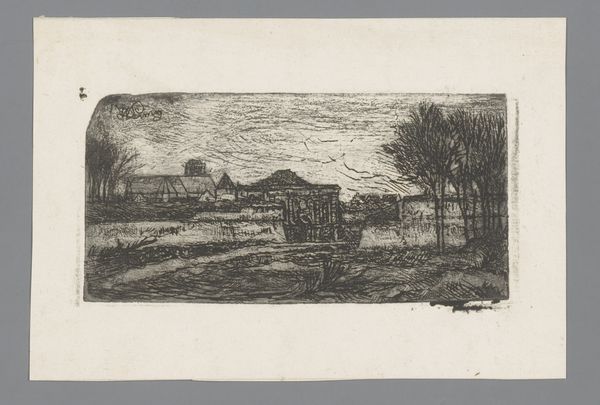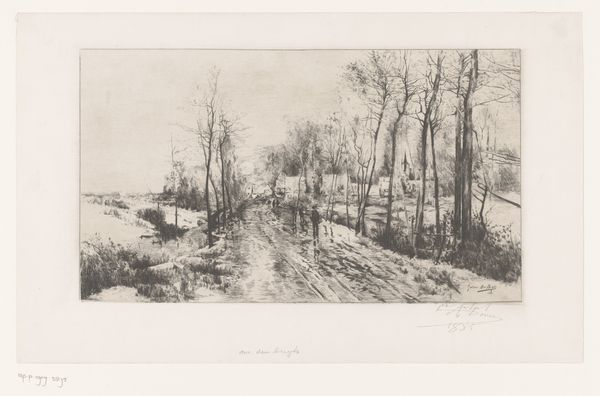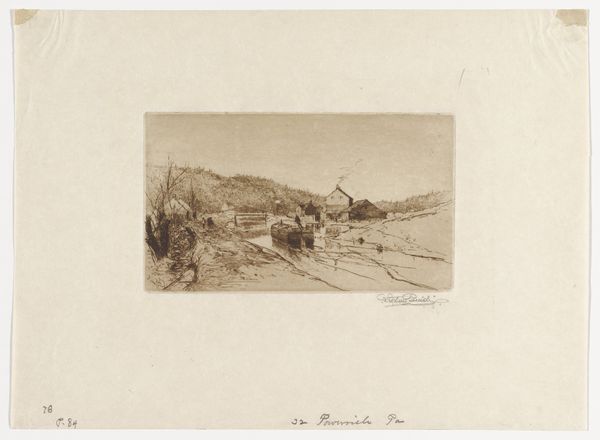
print, etching
# print
#
etching
#
landscape
#
united-states
#
realism
Dimensions: 7 x 11 3/4 in. (17.78 x 29.85 cm) (plate)12 3/4 x 17 3/4 in. (32.39 x 45.09 cm) (sheet)
Copyright: Public Domain
Curator: This is "Winter Evening," an etching by Stephen Parrish, dating from the late 19th century. Editor: My initial impression is one of profound stillness, and it's monochrome lends a sense of austerity to this wintry scene. Curator: Absolutely. The tonal range in this etching—its gradations from light to dark—establish the form and atmosphere very economically, wouldn't you agree? There is something structurally captivating about the composition and distribution of weight. Editor: Yes, it almost romanticizes rural life, albeit with a degree of coldness, given the period during the rapid industrialization of America. Were there debates in art regarding idealization in contrast to modernism at this time? Curator: Without a doubt. But, I find the surface quality, particularly the velvety blacks and subtly modulated grays of the print, quite masterful. It transforms an ordinary subject, a horse-drawn cart in winter, into an aesthetic object. Editor: Do you find that its small scale restricts its potential for social commentary? It makes me think that even the simple acts of transportation during winter may become a signifier of a rural world quickly fading into collective memory. Curator: Its small scale heightens its intimacy, its delicacy—creating a private encounter with the viewer that is more about pictorial refinement than direct political engagement, perhaps. It's as if Parrish extracted and made permanent the image into one that feels suspended from linear time. Editor: The placement of the work becomes so fascinating; the history of curation may reveal what type of discourse the image had to carry during its presence within public display. And each public showing in its time reflects something unique! Curator: True, it's an understated marvel of light, tone, and structure—and in it is revealed, quite profoundly, a subtle distillation of landscape. Editor: I’ve gleaned new respect for Parrish’s restraint, his eye, within socio-historical and philosophical contexts.
Comments
No comments
Be the first to comment and join the conversation on the ultimate creative platform.

